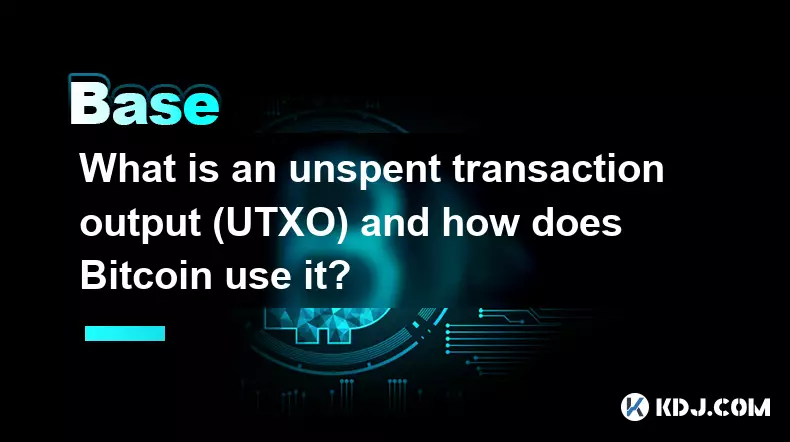-
 bitcoin
bitcoin $95203.028270 USD
-4.12% -
 ethereum
ethereum $3151.730711 USD
-1.61% -
 tether
tether $0.999170 USD
-0.04% -
 xrp
xrp $2.273039 USD
-1.55% -
 bnb
bnb $924.288432 USD
0.14% -
 solana
solana $141.112899 USD
-2.02% -
 usd-coin
usd-coin $0.999964 USD
0.02% -
 tron
tron $0.293976 USD
0.82% -
 dogecoin
dogecoin $0.160772 USD
-1.84% -
 cardano
cardano $0.506357 USD
-3.90% -
 hyperliquid
hyperliquid $37.900515 USD
0.03% -
 zcash
zcash $644.358451 USD
26.66% -
 chainlink
chainlink $14.062007 USD
-2.60% -
 bitcoin-cash
bitcoin-cash $484.381072 USD
-5.12% -
 unus-sed-leo
unus-sed-leo $9.199874 USD
0.27%
What is the difference between a rollup and a validium for scaling?
Rollups scale blockchains by processing transactions off-chain while posting data on-chain for security, with optimistic and ZK variants offering different validation approaches.
Nov 08, 2025 at 06:40 am

Understanding Rollups in Blockchain Scaling
1. Rollups are layer-2 scaling solutions that process transactions off the main blockchain while posting transaction data back to the base layer for security. This allows them to inherit the decentralization and security guarantees of the underlying blockchain, typically Ethereum.
2. There are two primary types of rollups: optimistic and zero-knowledge (ZK) rollups. Optimistic rollups assume transactions are valid by default and use fraud proofs to challenge invalid ones during a dispute window. ZK rollups, on the other hand, use cryptographic proofs called zk-SNARKs or zk-STARKs to prove the correctness of batches of transactions before they are accepted on-chain.
3. Because rollups store transaction data directly on the main chain, they are considered fully on-chain in terms of data availability. This ensures that anyone can reconstruct the state of the rollup, making them censorship-resistant and trust-minimized.
4. The trade-off with rollups is cost. Posting large volumes of transaction data to the mainnet increases fees, especially during network congestion. However, by batching hundreds of transactions into a single on-chain submission, rollups still achieve significant scalability improvements compared to executing all transactions directly on layer 1.
The Role of Validium in Scalability Architecture
1. Validium also operates as a layer-2 scaling solution and shares similarities with ZK rollups in its use of validity proofs. It processes transactions off-chain and submits cryptographic proofs to the main chain to verify their correctness.
2. The key distinction lies in data availability. Unlike rollups, Validium does not post transaction data to the Ethereum mainnet. Instead, it relies on external parties or operators to store the data, often using decentralized committees or data availability committees (DACs) to ensure reliability.
3. By keeping data off-chain, Validium drastically reduces gas costs associated with data publication. This makes it more cost-efficient than rollups for high-throughput applications such as gaming or enterprise financial systems where low latency and high transaction volume are critical.
4. However, this design introduces a trust assumption. If the entities responsible for data availability become uncooperative or compromised, users may be unable to access their funds or reconstruct the system’s state. This weakens censorship resistance compared to rollups.
Comparative Trade-offs Between Rollups and Validium
1. Security models differ fundamentally. Rollups maintain full security through on-chain data availability, aligning closely with Ethereum’s trustless principles. This makes rollups ideal for decentralized finance (DeFi) applications where asset custody and transparency are paramount.
2. Validium sacrifices some decentralization for performance. While it offers faster throughput and lower costs, its reliance on off-chain data availability means users must trust that the data will remain accessible. Some implementations mitigate this with multi-signature DACs or economic incentives, but the risk remains higher than in rollups.
3. Use cases diverge based on these properties. Rollups suit applications demanding maximum security and auditability, such as decentralized exchanges and lending protocols. Validium fits scenarios where speed and cost efficiency outweigh absolute decentralization, including real-time games or private enterprise blockchains.
4. Upgradability and interoperability vary. Many rollup networks support EVM compatibility and can seamlessly integrate with existing smart contracts. Validium systems may require custom tooling due to their specialized architecture, limiting developer accessibility.
Frequently Asked Questions
What prevents a Validium operator from hiding transaction data?Operators in a Validium system are typically bound by commitments from a Data Availability Committee (DAC), which signs off on data storage. If the operator refuses to release data, the DAC can publish it. However, if the DAC colludes or fails, users may lose access to fund withdrawal proofs, introducing centralization risk.
Can ZK rollups and Validium use the same proof systems?Yes, both can utilize zk-SNARKs or zk-STARKs to generate validity proofs. The core difference isn’t the proof mechanism but where the transaction data is stored. ZK rollups include data on-chain; Validium keeps it off-chain, altering their security and trust assumptions despite similar cryptographic foundations.
Why would a project choose Validium over a rollup?Projects prioritizing high throughput and minimal transaction fees may opt for Validium. Applications like blockchain-based games or high-frequency trading platforms benefit from reduced costs and faster processing, even if it means accepting a slightly higher trust model for data availability.
Disclaimer:info@kdj.com
The information provided is not trading advice. kdj.com does not assume any responsibility for any investments made based on the information provided in this article. Cryptocurrencies are highly volatile and it is highly recommended that you invest with caution after thorough research!
If you believe that the content used on this website infringes your copyright, please contact us immediately (info@kdj.com) and we will delete it promptly.
- Tokenization, 24/7 Markets, and Vlad Tenev: The Future of Finance?
- 2025-11-15 11:30:01
- Bull Market Bonanza: Crypto Presales and Explosive Growth Opportunities
- 2025-11-15 11:25:01
- Crypto Carnage: Navigating Selling and Liquidations in a Wild Market
- 2025-11-14 16:50:01
- Crypto Presales, Monero, and Solana: Navigating the Hype in the Wild West of Digital Assets
- 2025-11-15 11:20:01
- XRP ETF, Bitcoin ETF, Solana ETF: A New Era for Crypto Investing?
- 2025-11-15 11:15:02
- Bitfarms Plunges into AI: A Risky Bet or Genius Pivot?
- 2025-11-15 11:10:02
Related knowledge

What is the difference between a transparent and a shielded transaction?
Nov 10,2025 at 05:59pm
Understanding Transparent Transactions in Cryptocurrency1. Transparent transactions are the standard form of transaction on most public blockchains li...

What is a "crypto airdrop farmer" and what strategies do they use?
Nov 09,2025 at 03:39pm
What Is a Crypto Airdrop Farmer?1. A crypto airdrop farmer is an individual who actively participates in blockchain projects to qualify for free token...

What is an unspent transaction output (UTXO) and how does Bitcoin use it?
Nov 12,2025 at 01:40am
Understanding the Concept of Unspent Transaction Output (UTXO)1. An Unspent Transaction Output, commonly referred to as UTXO, is a fundamental compone...

What is a "governance attack" and how can a DAO be compromised?
Nov 14,2025 at 05:59am
Understanding Governance Attacks in Decentralized Autonomous Organizations1. A governance attack occurs when an individual or group gains disproportio...

How do you track a crypto portfolio across multiple wallets and chains?
Nov 12,2025 at 04:19pm
The Evolution of Decentralized Exchanges in the Crypto Ecosystem1. Decentralized exchanges (DEXs) have transformed how users trade digital assets by r...

What is a "rug pull" clause in a smart contract and how can you spot it?
Nov 14,2025 at 11:40pm
Understanding the Concept of a Rug Pull in Decentralized Finance1. A rug pull refers to a malicious act in the cryptocurrency space where developers a...

What is the difference between a transparent and a shielded transaction?
Nov 10,2025 at 05:59pm
Understanding Transparent Transactions in Cryptocurrency1. Transparent transactions are the standard form of transaction on most public blockchains li...

What is a "crypto airdrop farmer" and what strategies do they use?
Nov 09,2025 at 03:39pm
What Is a Crypto Airdrop Farmer?1. A crypto airdrop farmer is an individual who actively participates in blockchain projects to qualify for free token...

What is an unspent transaction output (UTXO) and how does Bitcoin use it?
Nov 12,2025 at 01:40am
Understanding the Concept of Unspent Transaction Output (UTXO)1. An Unspent Transaction Output, commonly referred to as UTXO, is a fundamental compone...

What is a "governance attack" and how can a DAO be compromised?
Nov 14,2025 at 05:59am
Understanding Governance Attacks in Decentralized Autonomous Organizations1. A governance attack occurs when an individual or group gains disproportio...

How do you track a crypto portfolio across multiple wallets and chains?
Nov 12,2025 at 04:19pm
The Evolution of Decentralized Exchanges in the Crypto Ecosystem1. Decentralized exchanges (DEXs) have transformed how users trade digital assets by r...

What is a "rug pull" clause in a smart contract and how can you spot it?
Nov 14,2025 at 11:40pm
Understanding the Concept of a Rug Pull in Decentralized Finance1. A rug pull refers to a malicious act in the cryptocurrency space where developers a...
See all articles









































































